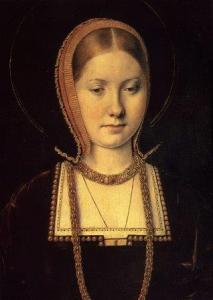Book Review: Catherine of Aragon
Giles Tremlett, Catherine of Aragon: Henry’s Spanish Queen. Faber and Faber Ltd, London, 2010 (Pbk)
Several years ago, I bought Catherine of Aragon at Heathrow looking for something to while some time away during a 24-hour flight. And I was hooked – compared to Catherine, the normal inflight entertainment didn’t stand a chance.
Catherine of Aragon is well written and very readable. It provides a lot of background information on Catherine’s parents and the situation in Spain and her early years in England, all of which shaped her character. The passages about Catherine’s youth in Spain and the descriptions of the scenery and palaces, especially the Alhambra palace in Granada, are a delight.
While I had always regarded the reyes catolicos in a fairly negative light, I came to understand them better, though Ferdinand remains throughout the book a rather devious character. The answer to the question about Catherine and Arthur’s marriage – did they or didn’t they? – is left open.
The author’s characterisation of the queen is well-balanced, she is certainly likable, but at the same time, she comes across as stubborn and fairly obsessive. Henry, on the other hand, steps off the pages as a selfish bully, who at the same time is easily led.
Unfortunately, the above edition of Catherine of Aragon does not contain any foot or endnotes, though these are provided on the publisher’s website. However, I believe the American version does include them.
As a Ricardian there was one sentence I enjoyed particularly:
The aim was to turn things on their head: Catherine, the victim, was to be cast as the troublemaker; Henry, who had started it all, was to be turned into the victim who needed saving from the ‘pensive and dolorous life’ into which he had been enslaved by the revelation that his marriage was invalid (p 270).
Political spin at its best, which was also used when Henry found out he did not really want to be married to wife no. 4, Anne of Cleves. Though the Tudors were neither the first nor the last to employ this tactic to blacken their opponent’s name.
